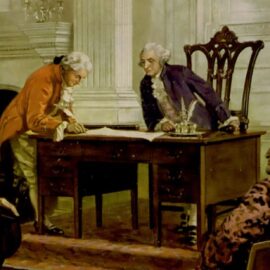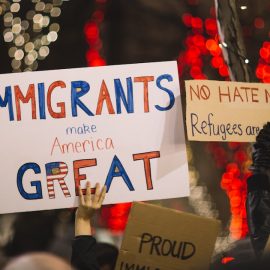

This article is an excerpt from the Shortform book guide to "The 1619 Project" by Nikole Hannah-Jones. Shortform has the world's best summaries and analyses of books you should be reading.
Like this article? Sign up for a free trial here .
Why is the Black poverty rate so high in America? Why is the racial wealth gap so hard to close?
For the majority of Americans, wealth is something that’s accumulated across generations through inheritance. But Black Americans have historically been left with little to no inheritance, making it much harder for them to gain success and wealth compared to white Americans.
Keep reading to learn about the causes of Black poverty in America.
Stuck in Poverty
Black Americans generationally lack wealth, and wealth is the factor that grants opportunities and safety in America. Wealth ensures a safe house in a good neighborhood, access to good schools, higher education, medical facilities and adequate treatment, diverse job opportunities, and more.
(Shortform note: Recent studies show that while inheriting wealth isn’t quite as common as the authors frame it to be, there’s still a huge gap between the inheritance expected and received by Black and white Americans. In 2019, only 10% of Black households received inheritance compared to 30% of white households. And the average sum inherited by Black households was $100,000 compared to $200,000 inherited by white households. Researchers add, like the authors, that these inheritances play a large role in perpetuating the generational Black-white wealth gap.)
Black Americans generationally lack wealth because, due to slavery, they were the first race to begin life in America with zero capital—no houses, food, clothes, or money to buy them. After being freed, the only option for the majority of former slaves was to sharecrop on their former enslavers’ land. This system continued to exploit their labor and provided barely enough money for them to feed themselves. Consequently, they were never able to accumulate wealth and pass an inheritance on to later generations. It is, for this reason, that Black poverty in America is so high.
(Shortform note: Other experts add that the sharecropping system was specifically designed to keep Black Americans dependent on their former enslavers. Once freed, Black sharecroppers were given a small plot of land, living quarters, and farming equipment from their former enslavers. In exchange, sharecroppers raised a cash crop and were required to give at least 50% of it to the landowner each year. Landowners also required the sharecroppers to pay fees out of their crop earnings, leaving them with as little as a quarter of the profit.)
And when Black people did find wealth and success in rare situations, they often faced brutality and robbery from jealous whites. In the South especially, being successful and Black was dangerous—it was seen as “stealing business” from whites and was met with destruction and even murder. Law enforcement encouraged this violence—they refused to punish white terrorists and fined Blacks exorbitant amounts for made-up crimes to put them out of business. This stripped Black people of any wealth they had.
| White Policing of Black Americans In Caste, Isabel Wilkerson discusses white supremacy, white fear, and the violent reactions to Black success during Jim Crow. She explains white people had a sense of alpha entitlement due to the racial hierarchy that dominated America since its founding. This entitlement gave them the perceived authority to police the actions of Black Americans as they deemed fit. So when Black people gained their freedom, whites felt that it was their duty and right to maintain the racial caste system. Wilkerson notes that a prime example of this is the Tulsa Race Massacre of 1921. More than a thousand white men gathered to storm a police office and lynch a young black boy who was accused of assaulting a white female. But enacting their justice on the boy wasn’t enough—the mob then entered a nearby affluent Black community and leveled it to assert their dominance. The mob shot hundreds of citizens and burned numerous homes and buildings to the ground. |

———End of Preview———
Like what you just read? Read the rest of the world's best book summary and analysis of Nikole Hannah-Jones's "The 1619 Project" at Shortform .
Here's what you'll find in our full The 1619 Project summary :
- A reframing of American history with the institution of slavery at its core
- How democracy as we know it today was largely built by enslaved Blacks
- The racist institutions that persist today that originated from slavery






